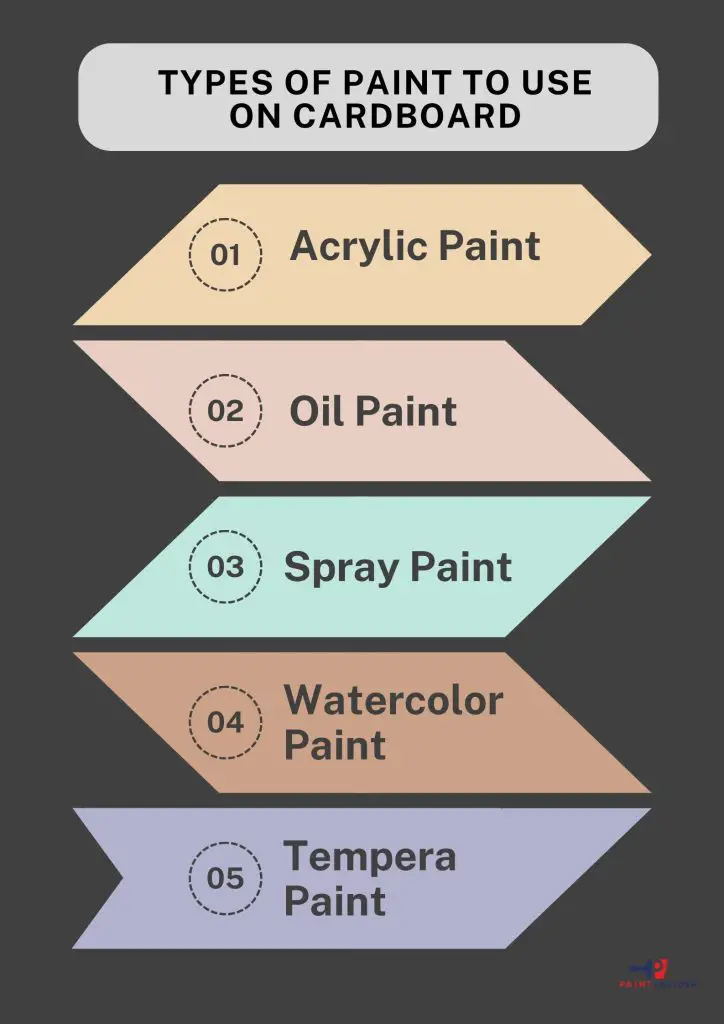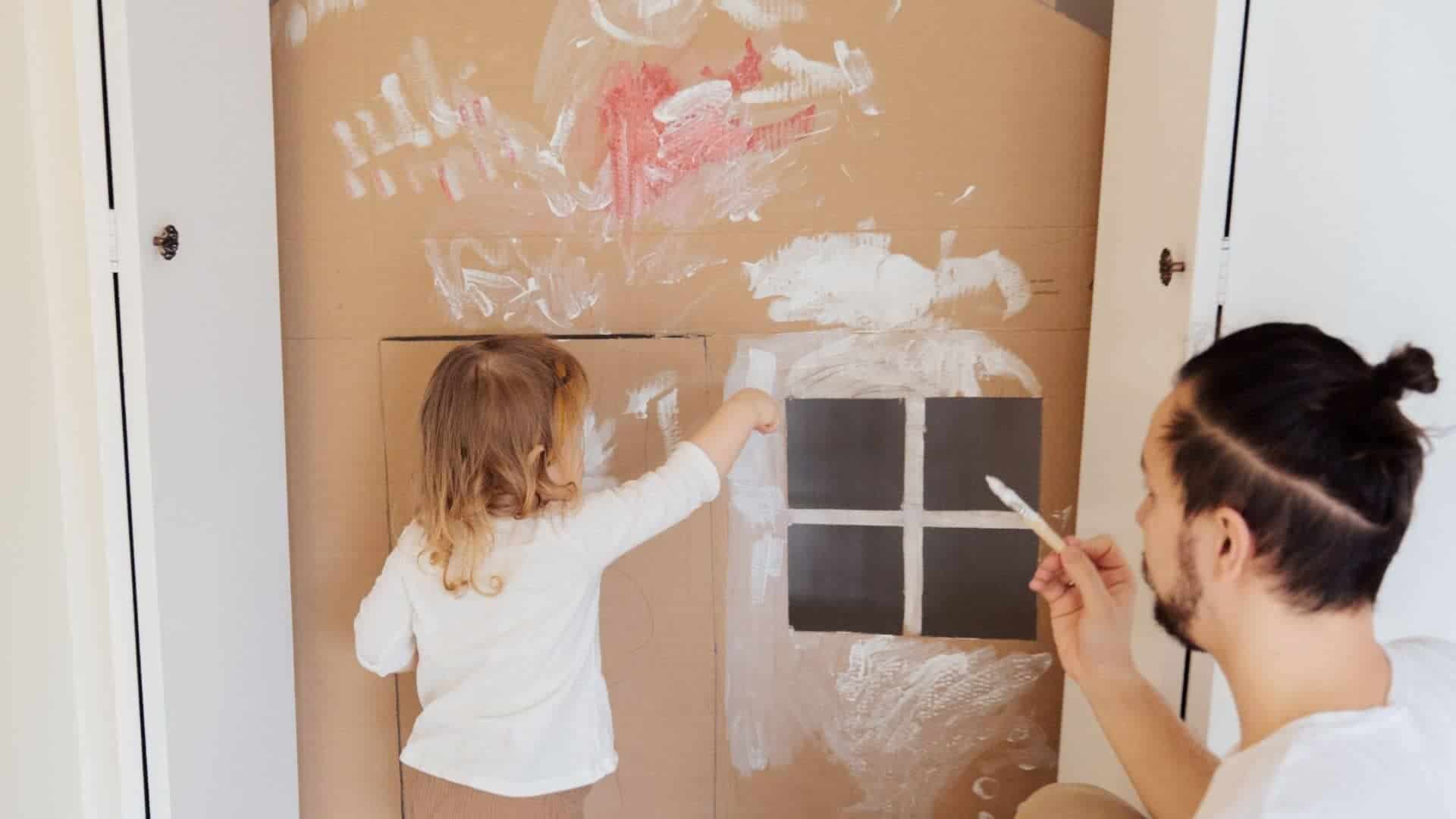If done correctly, painting can be a pretty satisfying experience. You can do it professionally or do it as a hobby for DIY fanatics like me. Painting, like any art, requires the right input to realize desired results. That said, different surfaces require different paints and specific application procedures.
Introduction: Understanding Paint for Cardboard
You need to choose correctly the most suitable paint for a particular surface. The paint used on the walls of a house cannot be used directly to paint on another material, say miniatures. Likewise, the paint you will use on furniture or other surfaces must be different from the one you will use on the cardboard.
So how do you get to decide on the type of paint to apply on a particular surface? Like any form of art, coloring has rules that should be followed. You can ask for professional advice before deciding on the right paint to use or check out informative blogs online that deal with color.
With that in mind, what paint are you going to use on cardboard? This article will present to you the most suitable dyes to apply on cardboard and what you need to do. Let’s get into the discussion to get more insight.
Types of paint to use on cardboard
There are many varieties of colors to choose from to paint your cardboard. However, you will need to choose the best to achieve satisfactory results.

Acrylic Paint
You will discover that Acrylic paint presents itself as the most convenient paint to use owing to its pocket-friendly prices. Acrylic paint has many applications in such materials as ceramics, fabric, wood, canvas, and metal. This paint has a fast-drying characteristic.
Another characteristic quality of Acrylic paint is its ability to dissolve water when it’s wet. That notwithstanding, when completely dry, it becomes resistant to water. All these features help safeguard the cardboard since it won’t get soaked or penetrate its interior layers.
Oil Paint
Oil Paint comes in handy in case you don’t have Acrylic paint. Oil paint shares almost all the qualities of Acrylic paint although it has a bright streak of color. It’s a mode of application on cardboard that is pretty easy. However, be prepared to dig dip into your pockets because this type of paint is relatively expensive.
Spray Paint
The first two options are the commonly used paints on cardboard. However, for several reasons, you may want to consider switching to other available options, and spray paint is worth giving a shot.
The positive side of this paint is that it takes a shorter time to dry, in addition to that, you can rest assured that spray pigment will not dissolve the cardboard. Ensure you place the cardboard in a flat position to prevent it from breaking during the spraying of paint.
Knowing the right paint to apply to your cardboard is an important step in your painting adventures. So how do you exactly color the cardboard? Read on for more insight.
Watercolor Paint
Watercolor paint is a versatile medium that effortlessly transforms creativity into vivid expression. While many may associate it with delicate washes and gentle landscapes, its adaptability goes far beyond the canvas. Using watercolor on cardboard can create stunning mixed-media projects, as the absorbent nature of good-quality cardboard allows for unexpected textures and layering effects. The vibrant hues interact uniquely with the fibrous surface, resulting in a visual depth that often surprises both artists and viewers alike.
Tempera Paint: Child-Friendly Choice
Tempera paint emerges as a go-to option for parents and educators looking to engage children in creative activities. Its non-toxic formula makes it safe for little ones, eliminating the worries that come with many traditional paints. Plus, tempera offers vibrant colors that invite young artists to explore their imaginations on various surfaces, including cardboard, a fantastic choice for school projects or home craft sessions.
Preparing Cardboard Surface for Painting
When preparing a cardboard surface for painting, it’s essential to start with a clean slate. Begin by wiping away any dust or debris that could interfere with adhesion. For optimal results, consider applying a layer of primer specifically designed for porous materials. This step not only helps seal the fibers but also creates a more uniform surface, preventing the paint from being absorbed unevenly.
How To Paint On Cardboard?
Applying paint on cardboard is pretty easy if you are armed with basic painting skills. You need to understand that, unlike other materials, cardboard will pose many challenges when applying paint to it. You will perform all the necessary steps on cardboard as you would on wood to achieve the desired results.
One major challenge you will encounter is the curling and distortion of the cardboard upon coming into contact with moisture and this is one reason why you should avoid water-based paints. Try to avoid water at all costs. Using a dry brush can do wonders to save you tedious work.
Avoid excess paint on the cardboard by putting the color directly on the brush instead of putting it directly on the cardboard paper. This trick will minimize the chances of the cardboard developing patches. A good practice is to apply thin layers of paint in between drying intervals in a consistent manner to achieve the final desired outcome.
About how to paint cardboard, we have a specific detailed article on this website. If you want to know about this you can read this How to Paint Cardboard.
Common Mistakes to Avoid When Painting
One common mistake many people make when painting, especially on surfaces like cardboard, is skimping on preparation. Failing to clean and prime the surface can lead to uneven paint application and peeling over time. Before you grab that brush, ensure your cardboard is dust-free, and consider applying a layer of acrylic gesso or primer designed for porous surfaces. This step not only improves adhesion but also enriches the vibrancy of your colors.
Additionally, choosing the wrong type of paint can be detrimental to your project’s success. For cardboard, opting for water-based paints like acrylics is usually best because they dry quickly and won’t warp the material. Remember that using oil-based paints may result in unwanted moisture damage or an overly glossy finish that hides details. By selecting appropriate materials and taking time with preparatory steps, you can elevate your artwork from amateurish to remarkable!
Conclusion: Choosing the Right Paint Matters
In the world of creativity, the right paint can make all the difference, especially when it comes to unconventional surfaces like cardboard. While it may be tempting to grab whatever is handy, choosing the appropriate type of paint ensures not only vibrant colors but also durability that withstands wear and tear. Acrylic paints stand out for their versatility and quick-drying properties, making them a favorite among crafters tackling cardboard projects. But don’t overlook other options, spray paints can provide a smooth finish for larger areas, while tempera paints offer an affordable and kid-friendly alternative.
Moreover, considering factors such as finish and texture can take your art to another level. For instance, matte finishes may suit some creative expressions better than glossy ones depending on how you want your piece to interact with light. Remember that preparation is key; priming your cardboard before painting can enhance color vibrancy and longevity. Ultimately, taking the time to choose the right paint tailored for your specific project not only elevates the final outcome but also enriches your artistic journey.

